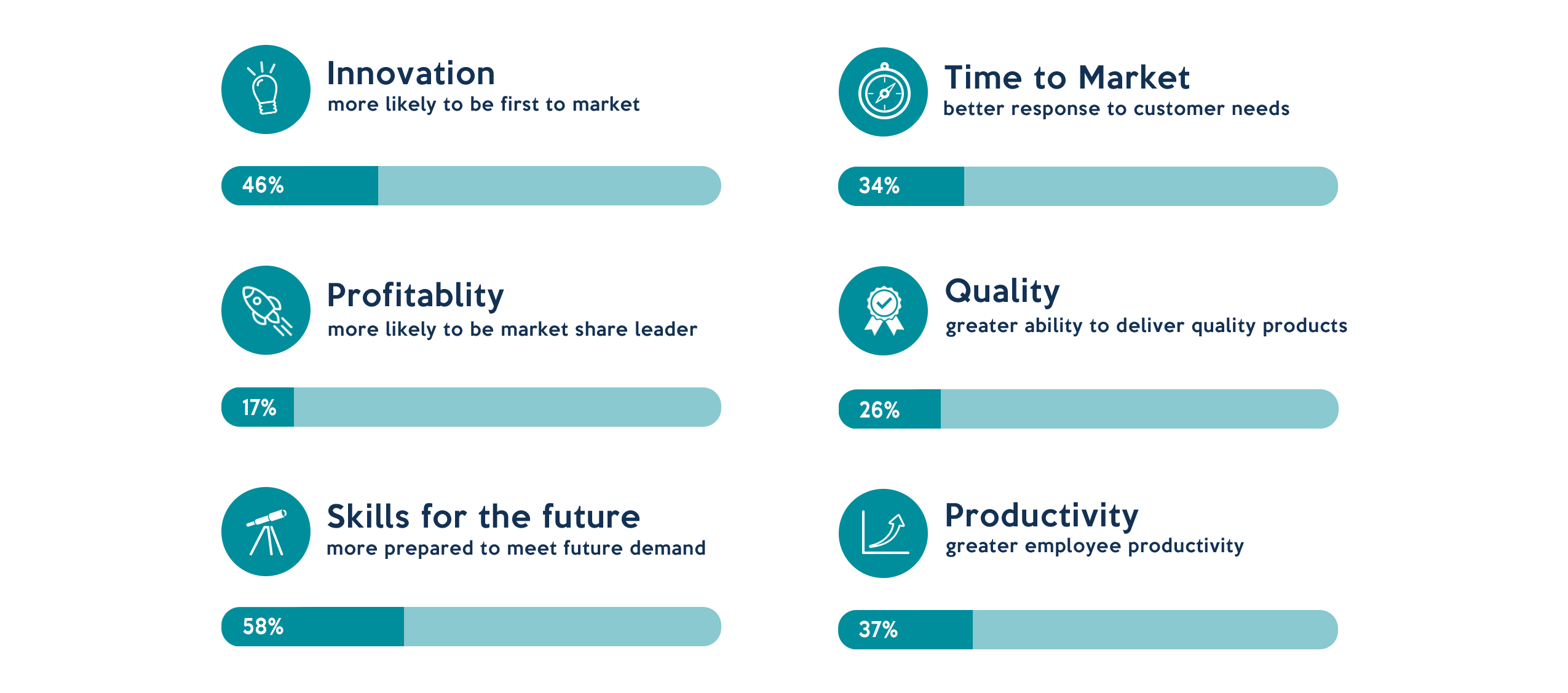The rapidly evolving business landscape has emphasized continuous learning and development (L&D) as a cornerstone of corporate success. With technological advancements, shifting skill requirements, and the need for innovative solutions, organizations that fail to foster a culture of continuous L&D risk falling behind in the competitive marketplace.
Learn more about the importance of building a continuous L&D culture and its benefits.
The Importance of Continuous L&D

A strong connection exists between a robust learning culture and the overall success of a business. Deloitte's Leading in Learning report highlights that organizations emphasizing continuous learning are 46% more likely to be market leaders, achieve a 37% increase in productivity, and exhibit a 92% greater likelihood of innovation. Beyond these remarkable figures, fostering a continuous learning environment renders a company an attractive workplace. Consequently, a continuous learning culture not only draws top talent but also aids in retaining it. Providing employees with ongoing learning opportunities has a direct impact on retention. According to a survey, when employees feel that their employer is investing in their professional growth and development, they are between 30-50% more likely to remain with the organization for a longer duration of time. It is important to treat talent as a valuable and replenishable asset, not only as a means of showing appreciation for employees but also because it can be more cost-effective than constantly recruiting and training new hires.
Overlooking the significance of learning leaves employees ill-equipped to navigate rapid workplace changes and the diminishing longevity of skills. In the past, talent sought employment to master a specific role, but nowadays, learning is the job. Adaptive and proactive learning is a highly valued trait, resulting in long-term benefits for career advancement. Companies must foster an environment that values employees, enhances retention, and achieves business success.
As we delve deeper into the significance of nurturing a continuous learning and development culture, it is essential to highlight the various aspects that contribute to its importance:
Nurturing Talent
Enhancing employees' skills, expertise, and capacities is vital in retaining existing top performers and attracting new ones. By cultivating a culture of continuous learning and development (L&D), organizations can showcase their dedication to supporting the professional growth of their workforce.
This, in turn, results in increased employee engagement, satisfaction, and allegiance to the company, as individuals recognize that their personal and professional development is valued and prioritized.
Adapting to Change
Organizations need to exhibit agility and adaptability in an era characterized by swift advancements in technology, fluctuating regulations, and ever-shifting market conditions.
Employees are empowered to remain current with prevailing trends, leading industry practices, and novel innovations by embracing a continuous learning and development culture. This fosters a spirit of ingenuity and ensures that the organization maintains its competitive advantage.
Enhancing Performance
By adapting to a culture of continuous learning and development, organizations can experience a notable improvement in overall performance. As employees acquire new skills and knowledge, they become adept at working more effectively and streamlining processes. Additionally, they develop the ability to identify areas of concern or potential vulnerabilities within the organization.
This heightened awareness enables them to create targeted solutions that address pressing challenges and bolster the company's position in the face of adversity.

Benefits of a Continuous L&D Culture
Embracing a culture of continuous learning and development benefits individual employees and strengthens the organization as a whole. The following section outlines the advantages of fostering such a culture.

Employee Engagement
When employees perceive that their organization genuinely values them and identify a clear path for personal and professional growth, they are more inclined to engage in their work actively.
This level of engagement has a domino effect on various aspects of the organization, including a surge in overall productivity and a decrease in employee turnover. This is a testament to the positive impact that a culture of continuous learning and development can have.
Collaboration and Innovation
Cultivating a culture of continuous learning and development promotes an environment that fosters cross-functional collaboration and encourages individuals to work together to solve complex problems. As employees share their knowledge, expertise, and unique perspectives, they collectively contribute to the development of innovative solutions that have the potential to propel the business toward greater success.
By nurturing this collaborative atmosphere, companies can unlock the full potential of their workforce and better navigate challenges.
Stronger Talent Pipeline
By dedicating resources to continuous learning and development initiatives, organizations are better equipped to pinpoint high-potential employees with exceptional aptitude and promise for future growth. By honing the skills and expertise of these individuals, companies can effectively cultivate a robust pipeline of talent that can be tapped into for filling leadership positions and other critical roles within the organization. This strategic investment in human capital not only supports the professional growth of high-potential employees. It also safeguards the company's long-term stability and success.
Posted on May 24, 2023 by CNEXT





